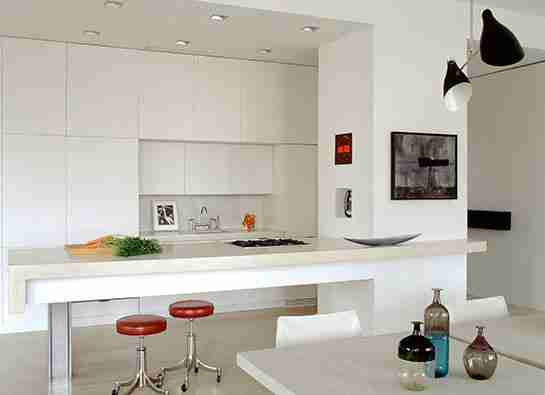Classic and clean, white kitchens are a perennial favorite. And in the midst of a pricey renovation—where kitchens often prove the costliest part—many sensible homeowners want a look with proven staying power. But opting for simplicity is hardly as straightforward as it appears. Turns out there are hundreds of variations on what might seem like the most basic hue in the book.
For help with this daunting decision, we turned to interior designer Bruce Bierman , whose snowy kitchens always achieve a certain crispness that’s not too cold. When Bierman rang in from his neutral-laden Palm Beach home, he was quick to admit: “My favorite color is white.” Bierman discusses five questions to think about when choosing the best milky hue for your kitchen. The prevailing answer? A lot comes down to trial and error.

Is white really right for you?
If a client tells me they want a kitchen that feels warm, white might not be my first choice. Think about the feeling you want the kitchen to have before you decide on a color.
What’s the light like?
I’ve worked with Donald Kaufman on a number of jobs, and one of the things I’ve learned from him is that light bounces. White paint scatters light uniformly in all directions, which is why it covers the wall more efficiently than any other color. But of course, some whites can be very sharp, so you want to look out for this. If I were doing a loft with a skylight, or another space with a lot of natural light, I wouldn’t choose a stark white because it would be too glaring. The whites we use balance the light in the room. The whites we use—usually Benjamin Moore’s Chantilly Lace , Donald Kaufman Color’s 51 , and Pratt & Lambert’s Pro-White —balance the light in the room. People walk in and they go, this is such a great white—it’s not too stark. Paint a test wall and look at it in the morning, afternoon, and night—every time of day, really—to see what works around the clock.

What other materials do you have in the kitchen?
White reflects other colors, so you always have to think about what’s in the kitchen—the countertop, the floors, the table. If you have a dark floor, the white is going to read differently than if you have a light floor. If you have some color in the kitchen—a dazzling blue quartzite countertop, for example—the room will have a little more depth; it won’t be so antiseptic.
How are you finishing the walls?
The quality of the walls and the finish can really affect how a wall color looks. Have the walls been skim-coated where they’re very smooth? Light will play more here than if you just do a few standard coats.
Have you been paying attention?
Seeing the way a great white works in someone else’s home lets you skip some of the work. Find out what the color is and paint a sample wall of your own.
RELATED: Explore AD 's Wall Decor Ideas & Paint Color Guide
